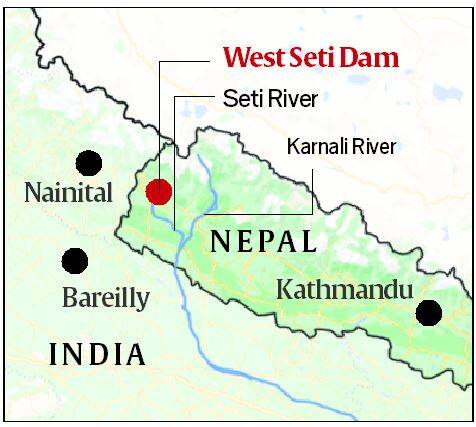7667766266
enquiry@shankarias.in
Recently, Nepal has signed a Memorandum of Understanding (MoU) with India to develop the West Seti and Seti River (SR6) projects to enhance the cross-border power exchanges.
To know more about India-Nepal relations, click here

The Mahakali Treaty, signed in 1996 covers the Sarada and Tanakpur barrages as well as the Pancheshwar Multipurpose project.
Scope for India
Scope for Nepal
References
Quick facts
Seti River